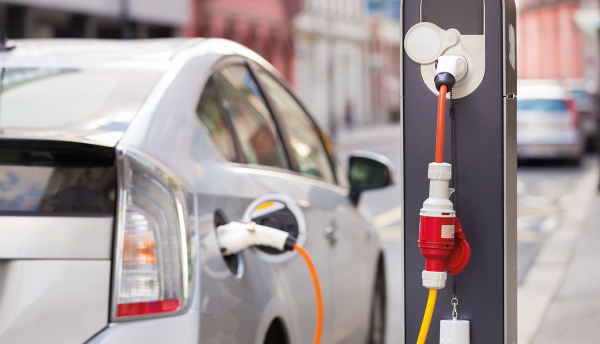
Month by month review of the most popular stories in our Insight news service
January – Geely plans to open UK manufacturing facility
The growth of the United Kingdom’s vehicle manufacturing pace continued early in 2015 with reports of a major investment by the Chinese OEM. Geely further confirmed in March that it will build a brand new factory on the outskirts of Coventry for its London Taxi Company, which manufactures the iconic London 'black cabs'. The company said it would invest GBP250 million in the new factory, with the capacity to assemble up to 36,000 vehicles a year.
The prospect of Apple unveiling its own light-vehicle is still years away. But the prospect of competition from Silicon Valley to traditional automotive suppliers is very real, with new areas such as semiconductors and sensors likely to play an increasing role in light-vehicle production. This article also identified a number of Apple’s suppliers that are already involved in the automotive industry.
March - Global OEMs announce another series of investments in Mexico
Mexico has grown strongly as both a market and an automotive production base over the last year. As of November 2015, light-vehicle sales, production and exports are all seeing notable gains in the year to date. With double-digit increases in many months of 2015, continuing into November, sales were up 18.8% y/y in the YTD. IHS earlier revised its sales forecast for 2015 upwards to 1.307 million units, a 15.2% gain, with no change in November. We expect credit conditions to continue to improve and a moderate pace of sales growth to ultimately become the trend, beginning with a forecast for 2016 of an increase of 5.3% and growth in subsequent years of 1−2%.
April - Fiat Chrysler (FCA) halts production at Betim, Brazil site on slow demand
In contrast to Mexico, Brazil is suffering thanks to a series of pressures including declining consumer confidence, difficult economic conditions, tightening credit and increasing interest rates, which is in turn affecting the automotive industry there. The trend continued through the year, when in November Honda delayed the start of production at its new Brazilian plant in Itirapina, São Paulo. In addition to this, Chinese automaker Chery has delayed production of the QQ in Brazil to January 2016.
May - Suppliers to the new Land Rover Discovery Sport
IHS Automotive expects that the new Discovery Sport will easily outperform the previous generation, and build up momentum to record global production of around 125,000 units per year (with Europe accounting for 65%) in 2016. This car cutaway provides details of 30 parts and their suppliers.
The exit from automotive capped a dramatic change of direction for the company. Just five years ago, Johnson Controls was involved in an aggressive takeover attempt of Visteon’s interiors and electronics business, offering USD1.25bn for the combined units. Now both have diversified away from the struggling interiors part of the business. The move continues a trend across the automotive industry to sell off businesses that are either underperforming, or that don’t represent part of a core product portfolio for the company.
The Magna-Getrag deal is another consolidation of first tier automotive suppliers following the notable ZF-TRW deal. In buying a significant automatic transmission supplier, Magna expects to become a complete driveline system supplier. Like the ZF-TRW deal, the long-term prospect for synergies between the two suppliers has a great deal of potential
August - Volkswagen nominates first series of FAST suppliers
The FAST initiative is one of a number of recent approved supplier schemes or ‘clubs’ that OEMs are creating in order to bring suppliers into the production process at an earlier stage. One of the earliest examples has been Ford with its aligned business framework, providing them with access to long-term forecasts and long-term technology roadmaps, while at the same time saying that they have preferential access to Ford’s business.
September - Volkswagen admits to using ‘defeat device’ to deliver false emissions results
It was the week which changed the automotive industry, as Volkswagen admitted that it had been using software on various models with diesel engines which could identify when a vehicle was undergoing emissions tests. The software would then start a programme designed to temporarily initiate a clean cycle of engine operation so as to produce lower pollution levels than normal.
IHS Automotive has collated data that provides the regional breakdown of Volkswagen (VW) Group vehicles fitted with the EA189 family of diesel powertrains, providing a regional breakdown of the brands and sales volumes involved on a region-by-region basis, and also a breakdown of the model nameplates involved in the United States
November - Ford plans production shutdown in Russia as Nissan intends layoffs
Political tensions and economic sanctions in the region have contributed to a severe downturn in the Russian market, with light-vehicle demand in the country falling by almost one-third during the first nine months of the year. Matters are not being helped for OEMs by a lack of export markets for their sites, with tariffs applied on imported components and logistics making this especially uncompetitive.
December - As powertrain development costs increase, what future does the diesel engine have?
A great deal of questions are being raised about the future of diesel light-vehicles, as BMW Group's CEO Harald Krüger has suggested that he sees a point when continuing development of diesel engines to meet emissions regulations will become uneconomic. Especially as battery costs are also expected to come down during the same timeframe which is likely to result in a shift to hybrids and electric vehicles over time. This report also takes a look at the regional split for diesel engine production and where its future lies.